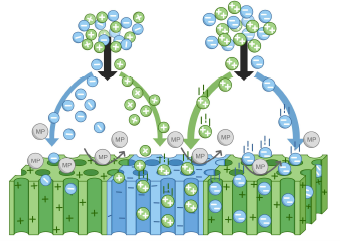Building Surface Charge-Mosaic PEM Membranes: Towards Removal of Organic Micropollutants and High Minerals Permeation
- Persons involved: J. Roberto Andrade (PhD Candidate), Wiebe de Vos (promotor), Esra te Brinke (supervisor)
- Duration: 2023-2027
- Funding: European Research Council (ERC) Consolidator Grant Mosaic
Introduction
With the increasing concentration of organic micropollutants (OMPs), safe and high-quality ecological water sources are being threatened.1 OMPs are small organic molecules that originate from industrial, agricultural, pharmaceutical, and chemical product residues. These molecules have the potential to cause long-term harm to humans and the environment in general, posing a real threat to human and aquatic life. While Reverse Osmosis and Nanofiltration membranes are more promising solutions, they have significant limitations due to low water permeability, high pressures needed, high salt retention, and the requirement of remineralization of the permeate to restore mineral quality for drinking water.2,3
A particular solution to high salt retentions was proposed in the 1930s by Sollner4, where a membrane that combines positive and negative charged domains (mosaic membrane), allows the passage of essential minerals but at the same time blocks molecules such as OMPs. However, until now nobody has been able to produce such a membrane with small enough domains to be effective. In this project, a novel surface charge-mosaic nanofiltration PEM membrane will be developed for the efficient removal of OMPs, while at the same time allowing the permeation of essential minerals.
Key words
Mosaic Membranes, PEM membranes, Nanofiltration, Organic micropollutants (OMPs)
Technological challenges
The key challenge for building charge-mosaic membranes is the creation of nanometer sizes of positively and negatively charged domains on the surface with high permeation rates.
Research questions
1) The development of beyond the state of the art of mosaic membranes.
2) A working mosaic membrane that rejects organic micropollutants while allowing the passage of essential minerals.

Representation of a Mosaic Membrane
References:
1. Schriks, M., et al., (2010). Water Research. 2010, 44 (2), 461-476
2. Al-Rifai, J.H., et al., (2011) Separation and Purification Technology, 77 (1), 60-67
3. Radu, A. I., et al., (2014) Water Research 2014, 64, 160-176
4. Söllner, K., Uber Mosaikmembranen, Biochem. Z. 244 (1932) 370

